Air Force One
Courtesy Boeing Museum of Flight and Wikipedia, the free encyclopedia.
Edited by David Barth November 2014. Photos are by David Barth except where noted.
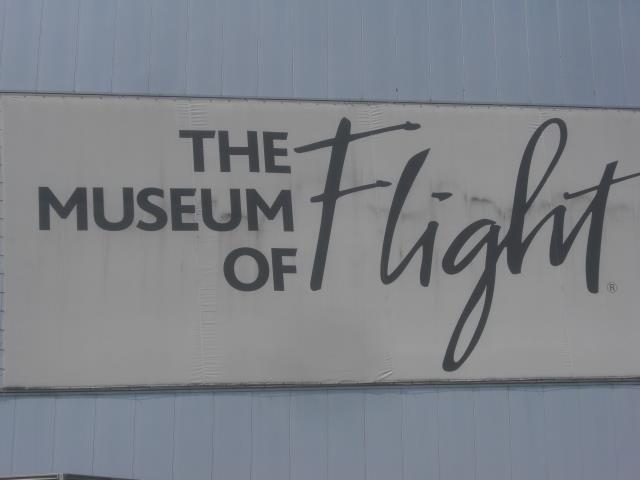 |
| Air Force One. |
 |
| Air Force One, Boeing 707, VC-137. |
One Plane with Three Names
VC-137
When the military acquires an aircraft, it is redesigned with a military code. The Museum's Boeing 707-153 is called C-137. "C" is the
type designation for cargo and transport planes. "137" is the identification number for commercial Boeing 707s purchased by the
military.
When this aircraft was used as a presidential transport, it was assigned a military special purpose status letter of "V" - issued for
V.I.P. transport.
SAM 970
SAM 970 is the flight and mission name for this particular VC-137. The "SAM" stands for Special Air Missions, and Air Force unit that
operates the presidential planes. "970" is the last three digits of the aircraft's tail number. Two other VC-137s were delivered with this
aircraft - SAM 971 and SAM 972.
When was this Airplane called Air Force One?
"Air Force One" is a temporary call sign, used by air traffic controllers, given to any Air Force aircraft while it has the President
aboard. A Marine or Army aircraft uses the call sign "Marine One" or "Army One" when carrying the President.
Although SAM 970 flew many missions with the president aboard, the aircraft is not named "Air Force One" all the time. Air Force aircraft
carrying the vice-president use "Air Force Two" as a call sign.
Security for Air Force One
From the moment manufacturing starts, a presidential aircraft is under 24-hour guard. Workers and maintenance crews work by the
"buddy system" - meaning no lone workman ever approaches the aircraft.
Fuel and supplies are collected at random from Air Force and non-Air Force sources and are subject to a thorough inspection.
When the President flies over water, the route is dotted with ships and rescue aircraft, ready to jump into action for a rescue.
Before every departure or arrival of Air Force One, the Secret Service and Air Force guards scour the runway and surrounding areas.
While parked on the ground, a wide security perimeter is set around the aircraft by local police and the Secret Service. Within the
perimeter, an elite Air Police unit guards the presidential jet.
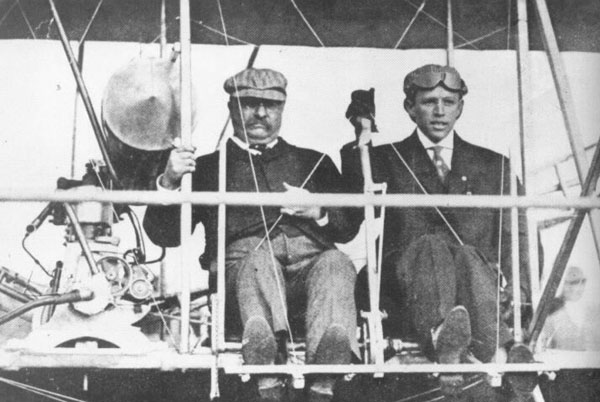 |
Theodore Roosvelt and pilot, Archibald Hoxley,
St. Louis, October 1911. Photo courtesy of Wikipedia,
the free encyclopedia. |
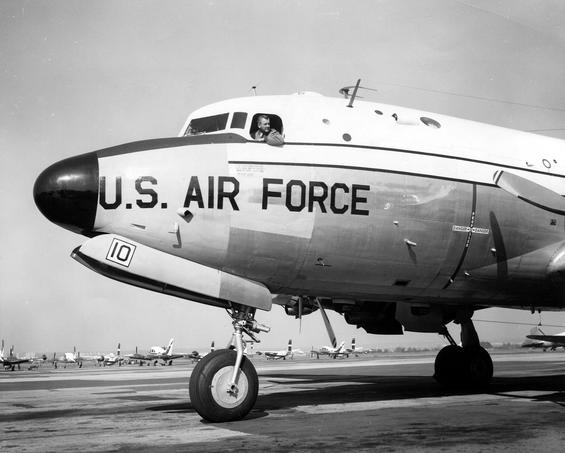 |
Presidents Franklin D. Roosevelt and Harry S. Truman's
Douglas C-54 Skymaster, "The Sacred Cow," December
1961.
Photo courtesy of Wikipedia, the free encyclopedia. |
"Sacred Cow," VC-54C, was delivered in June, 1944. This modified Douglas DC-4 was built as a transport for President Franklin D. Roosevelt
(FDR). "Sacred Cow," was the press' nickname for the aircraft was used by FDR on only one occasion before he died in office on April 12,
1945. The "Scared Cow" then became President Harry S. Truman's aircraft.
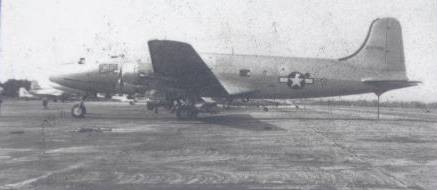 |
| "Sacred Cow." |
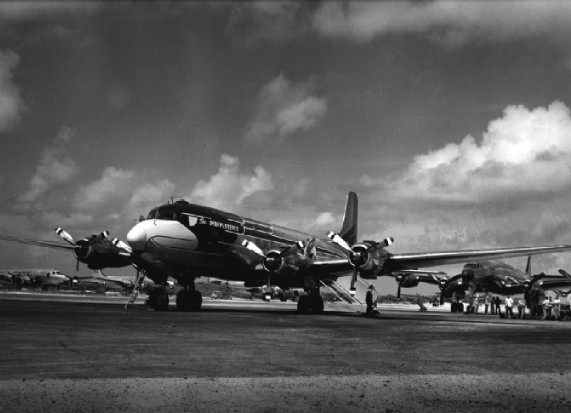 |
Douglas DC-6, VC-118. Photo courtesy of Wikipedia,
the free encyclopedia. |
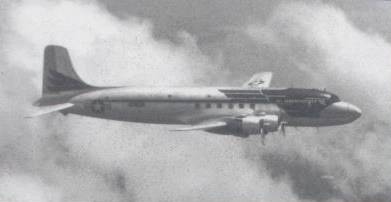 |
| Douglas DC-6, VC-118. |
Another Douglas product, a DC-6, VC-118, was diverted to the Army Air Forces and became Truman's presidential aircraft in July, 1947. Named in
honor of his hometown in Missouri, the "Independence" could carry Truman to any portion of the continental United States,
non-stop.
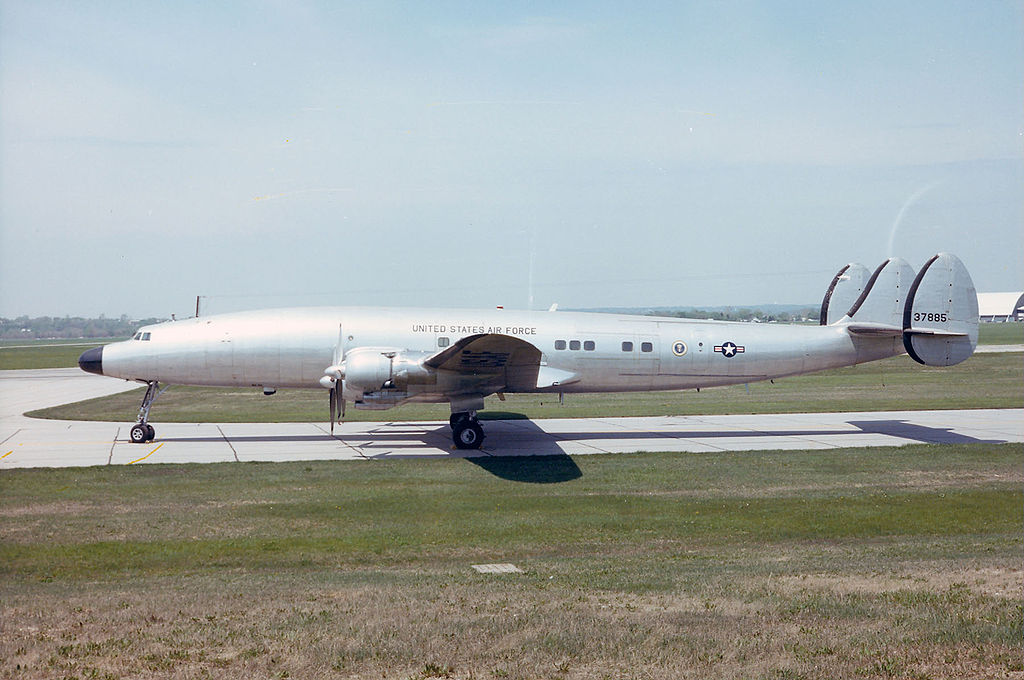 |
Lockheed Super Constellation, "Columbine III," VC-121E. Photo
courtesy of Wikipedia, the free encyclopedia. |
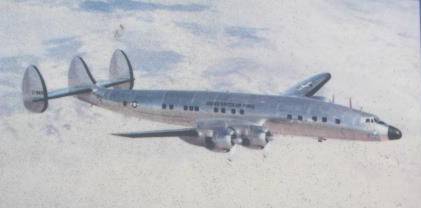 |
| Lockheed Super Constellation, "Columbine III," VC-121E. |
"Columbine III," VC-121E, was the last of a series of Lockheed Constellation aircraft used by Eisenhower as Allied Commander in Europe
and later during his presidency. The VC-121E was christened by First Lady Mamie Eisenhower in November, 1954. In addition to serving Ike,
the Super Constellation was used to transport national and international dignitaries.
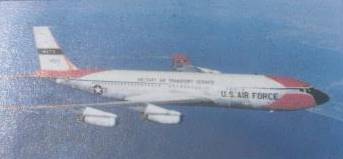 |
| Boeing 707. |
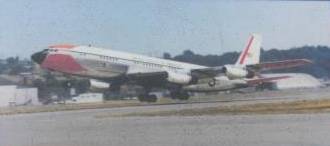 |
| Boeing 707. |
Color Schemes of SAM 970
The Museum's VC-137 aircraft went through many paint schemes during its Air Force career. You will see many photographs of the same
aircraft, Air Force number 58-6970, in different color schemes.
The VC-137As were delivered with the markings of the Air Force's Military Air Transport Service (MATS). Eisenhower always had access to
one of the military jets, but none of the aircraft were set aside for exclusive use by the President. The three VC-137As were considered
transport aircraft for all important government officials.
An overseas flight by a President or government official was commonly a mission of peace. To reflect a peaceful, good will nature,
President Kennedy requested that the military paint scheme be modified. The MATS markings [red] came off in April of 1961 and new,
more diplomatic markings [blue/white] were substituted.
Appearance of the aircraft changed yet again during the Kennedy Administration. Designer Raymond Loewy and First Lady Jacqueline Kennedy
developed a distinctive and dignified blue-and-white color scheme for the jets. The new scheme was popular with both the public and the
government and has become the standard for all presidential aircraft in service since the early 1960s.
Jimmy Carter modified the classic "Air Force One" paint scheme. The thrifty and modest President encouraged a more subdued appearance
for the jet transport. An all-white top replaced the previous bold blues and a gold accent strip completed the new, simple appearance.
The aircraft was painted in this scheme when it was donated to the Museum of Flight in June, 1996.
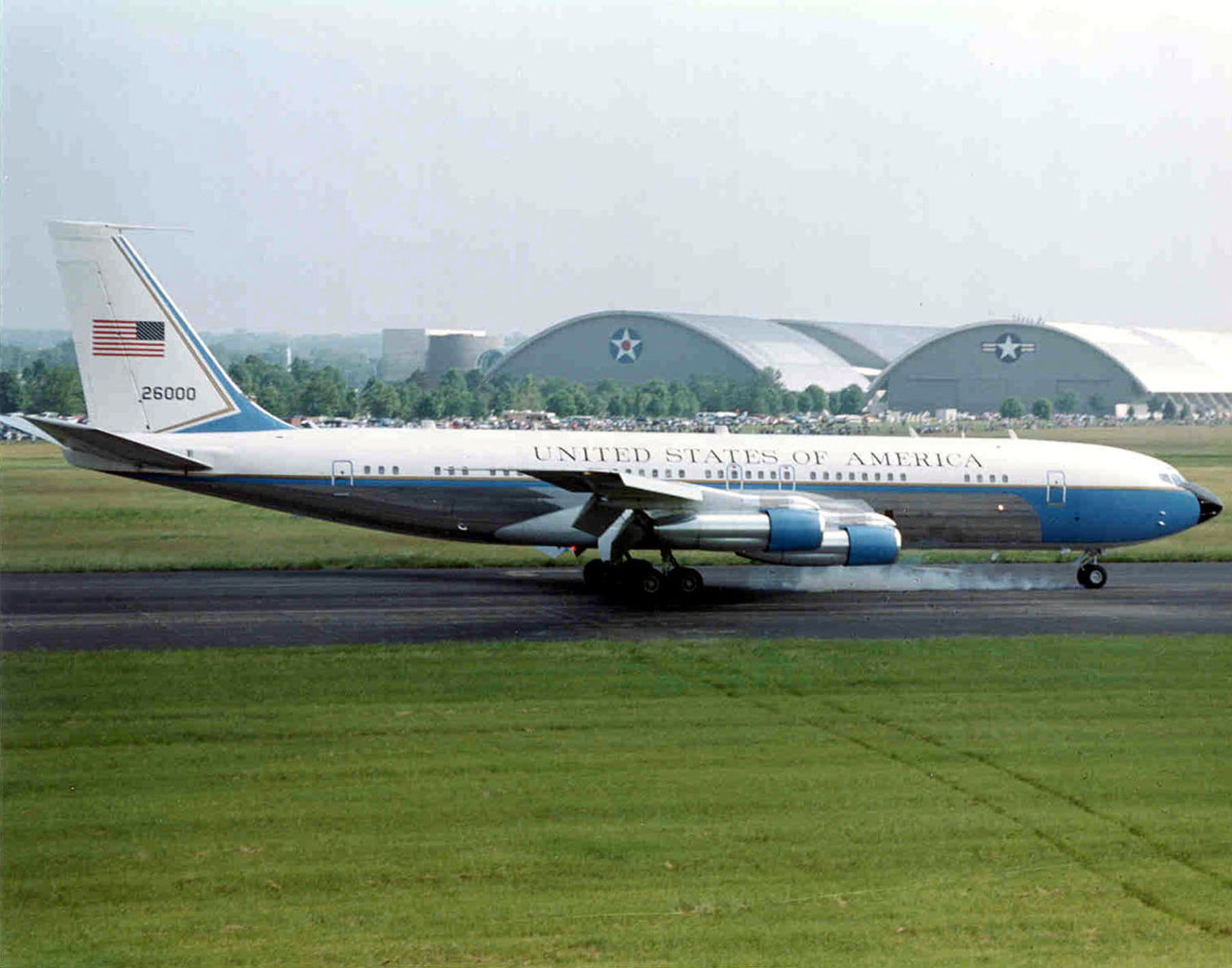 |
Boeing 707 VC-137B. Photo courtesy of Wikipedia,
the free encyclopedia. |
In 1959, when the days of propeller-driven aircraft seemed numbered, three modified Boeing 707s were delivered to the Special Air
Missions fleet. Called VC-137As, these aircraft were the primary transports for Presidents Dwight D. Eisenhower and John F. Kennedy.
In 1965, the engines were replaced with new turbofans, thus changing the designation to VC-137B.
| SPECIFICATIONS FOR BOEING 707 VC-137B |
|---|
| ITEM | SPECIFICATION |
|---|
| Span | 130 ft. 10 in. (39.9 m) |
| Length | 144 ft. 6 in. (44 m) |
| Height | 38 ft. 5 in. (11.7 m) |
| Wing Area | 2,433 sq. ft. (219 sq. m) |
| Weight, Loaded | 258,000 lbs. (116,100 kg) |
| Engines | Four JT3D-3 Pratt & Whitney turbojets |
| PERFORMANCE OF BOEING 707 VC-137B |
|---|
| ITEM | SPECIFICATION |
|---|
| Top Speed | 590 mph (944 km/h) |
| Range | 4,000 miles (6,400 km) |
| Service Ceiling | 40,000+ ft. (12,000+ m) |
| Passenger Capacity | 100 |
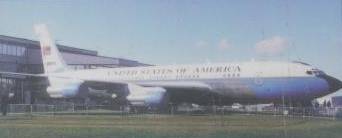 |
| Boeing 707 VC137B. |
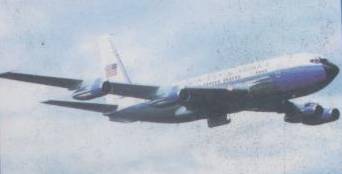 |
| Boeing 707 VC-137B. |
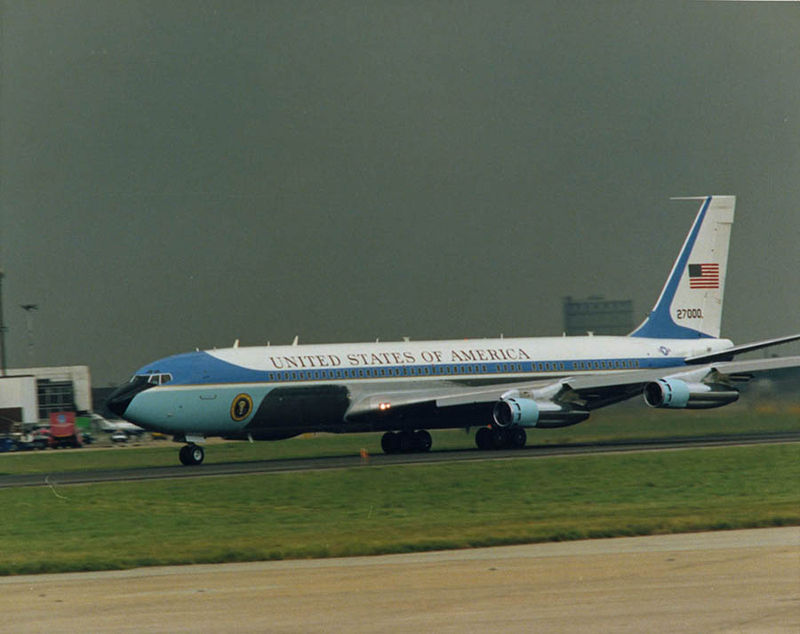 |
Boeing 707 VC-137B. Photo courtesy Wikipedia,
the free encyclopedia. |
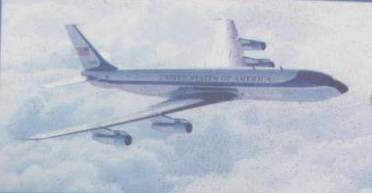 |
| Boeing 707 VC-137B. |
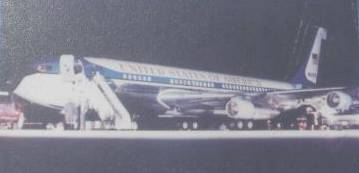 |
| Boeing 707 VC-137B. |
 |
| Boeing 707 VC-137B. |
These are interior views of Boeing's Museum of Flight Boeing 707 VC-137B.
 |
| Boeing 707 VC-137B. |
 |
| Boeing 707 VC-137B. |
 |
| Boeing 707 VC-137B. |
 |
| Boeing 707 VC-137B. |
 |
| Boeing 707 VC-137B. |
 |
| Boeing 707 VC-137B. |
 |
| Boeing 707 VC-137B. |
 |
| Boeing 707 VC-137B. |
 |
| Boeing 707 VC-137B. |
 |
| Boeing 707 VC-137B. |
 |
| Boeing 707 VC-137B. |
 |
| Boeing 707 VC-137B. |
 |
| Boeing 707 VC-137B. |
 |
| Boeing 707 VC-137B. |
 |
| Boeing 707 VC-137B. |
 |
| Boeing 707 VC-137B. |
 |
| Boeing 707 VC-137B. |
 |
| Boeing 707 VC-137B Communication Station. |
Secret communications are sent by a teletype system that automatically scrambles and de-scrambles messages. During the Johnson and Nixon
eras, "Air Force One" was equipped with a radiophone on which secret voice messages could be scrambled and sent. It rarely functioned
properly and was removed to save weight.
 |
| Boeing 707 VC-137B. |
 |
| Boeing 707 VC-137B. |
 |
| Boeing 707 VC-137B. |
 |
| Boeing 707 VC-137B. |
 |
| Boeing 707 VC-137B. |
 |
| Boeing 707 VC-137B. |
 |
| Boeing 707 VC-137B. |
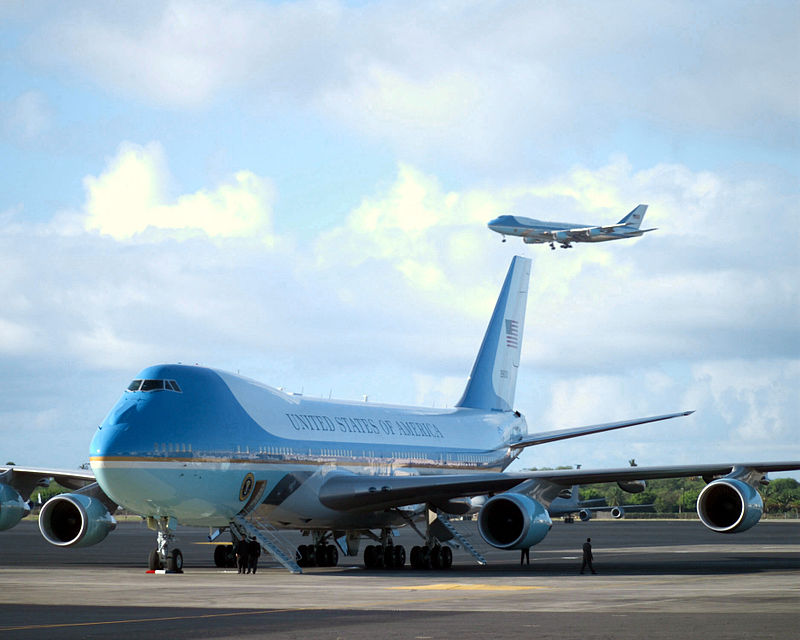 |
Boeing 747 VC-25A. Photo courtesy Wikipedia,
the free encyclopedia. |
After over thirty years of service, a new generation of aircraft was needed to replace the aging 707s. Two Boeing 747 jumbo jets were
selected to be the new presidential transports. The VC-25 is an airborne "Oval Office," equipped with the latest communication
technology, two complete galleys, and seating for 70 passengers.
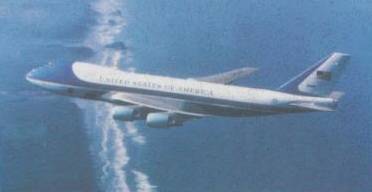 |
| Boeing 747 VC-25a. |
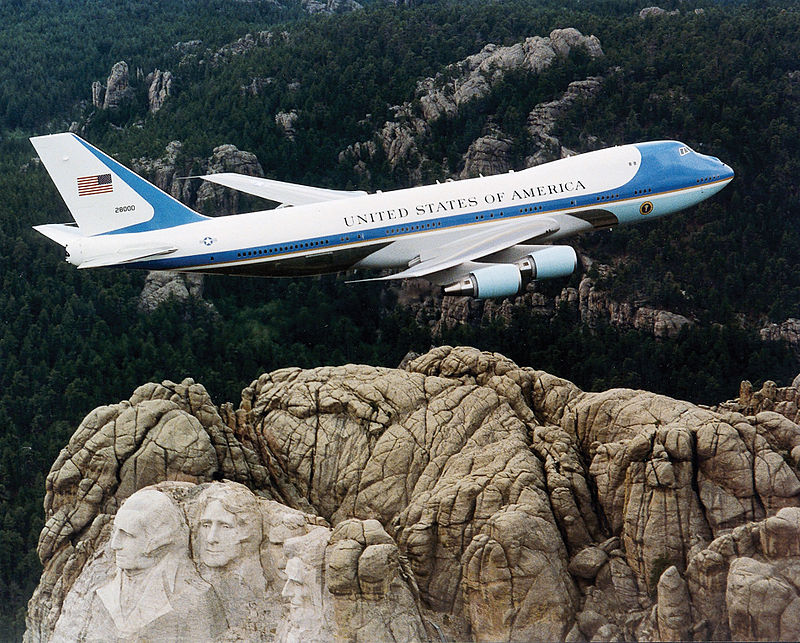 |
Boeing 747 VC-25a. Photo courtesy Wikipedia,
the free encyclopedia. |
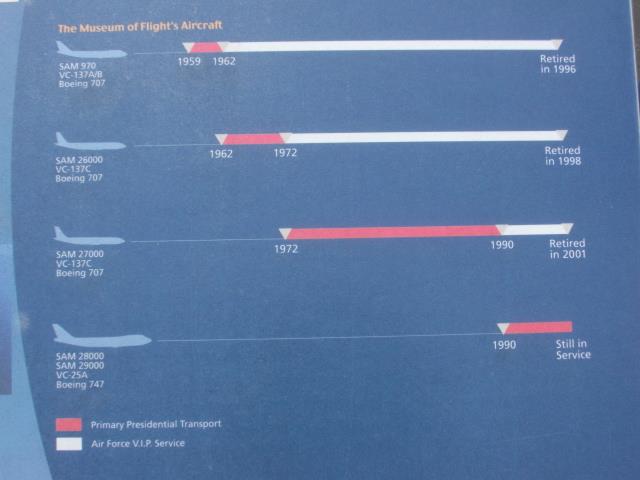 |
| Boeing Presidential Aircraft Usage. |
